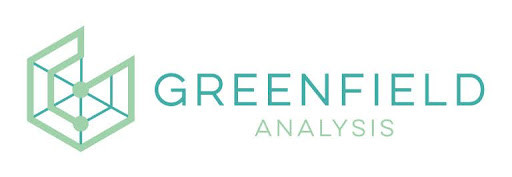The Right Place, The Right Time: GreenfieldAnalysis.ai Redefines Facility Placement

In supply chain design, few decisions carry as much long-term weight or cost as where to place a facility. Whether a distribution center, warehouse, or manufacturing site, its location impacts everything, from transportation efficiency to customer satisfaction and sustainability goals. Determining the optimal location has meant months of analysis, expensive consulting engagements, and navigating specialist-driven software. GreenfieldAnalysis.ai Inc., founded by industry veterans Amber and Andrew Siprelle, has launched to deliver fast, clear, and accessible facility placement insights without the noise.
This cloud-based decision tool can help businesses determine optimal facility locations using real-world data, geographic logic, and AI-enhanced modeling. It specializes in both "greenfield" analysis, where no prior infrastructure exists, and "brownfield" refinement, where existing networks need strategic rethinking.
Essentially, GreenfieldAnalysis.ai reimagines how modern companies make foundational network design decisions. It was created to bridge a gap where executive teams and designers needed timely, strategic clarity, but found themselves stuck choosing between consultants or overly complex software. "We want to bring something entirely new. By that, we mean speed, simplicity, and precision all in one clean interface," says Andrew.
The vision behind the platform was inspired by real-world experience. The duo boasts over 30 years of experience in logistics, operations research, and simulation modeling, and has been at the forefront of manufacturing and supply chain intelligence. Through their other ventures, including Simulation Dynamics, Inc. and later ChiAha Inc., a company dedicated to practical, decision intelligence tools, the duo has helped Fortune 500 companies navigate complex manufacturing and supply chain transformations.
Through their years of experience, Amber and Andrew have coalesced a team of industry experts, allowing them to take every venture they embark on to the next level.
Again and again, the same challenge surfaced. "Network design tools were either prohibitively expensive or too intricate for non-specialists," Amber shares. The moment called for a more agile, intuitive approach, and that's what Amber and Andrew decided to build.
GreenfieldAnalysis.ai enables users to input demand data, such as cities, states, and the volume of goods headed to each location, and rapidly visualize where facilities should go. The platform starts with the established Center of Gravity (CoG) method, which calculates optimal placement by weighting demand across a geographic area.
It then layers in geographic information system (GIS) data, real-world road networks, and demand clustering to account for practical constraints and opportunities. The outcome is map-based recommendations that reveal where a facility should be to serve customers best, minimize transportation, and streamline operations.
The process is straightforward. Users log in via browser, upload data or the built-in demo set, and begin testing scenarios in minutes. "Want to see what happens with one, two, or five new facilities? Add them live. Already have a center in Ann Arbor? Enter it and let the system adapt. Want to try a new distribution point? Add or subtract locations to observe how coverage shifts," Andrew says.
Once a user is satisfied, they can export a detailed breakdown of services, distances, and demand allocation. This provides them with actionable output ready for stakeholder discussions, further analysis, or direct implementation.
It's significant to note that, unlike most solutions in the supply chain analytics space, GreenfieldAnalysis.ai doesn't require a team of data scientists or an enterprise-level budget. It's priced transparently and is self-serve by design. Users can receive immediate insights with no setup delays, privacy concerns, or hidden fees.

The platform's capabilities can become a massive advantage in a world where geopolitical shifts, mergers and acquisitions, climate targets, and customer expectations are reshaping global supply chains. With increasing regulatory pressure and broader climate goals driving carbon-reduction strategies, strategic facility placement and rationalization have become more critical. Shorter routes, optimized hubs, and smarter networks aren't just cost-saving. They're carbon-cutting.
As the supply chain landscape grows more complex and competitive, companies need to move fast but also wisely. GreenfieldAnalysis.ai enables exactly that. It helps save money, reduce emissions, and avoid costly missteps long before the first brick is laid. In doing so, it's empowering businesses to make better choices while transforming how they think about supply chain design.
© Copyright IBTimes 2024. All rights reserved.




















